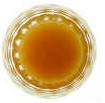High frequency of plasticizer contamination in China’s food: Study

The pilot study conducted by Chinese researchers analysed 78 food samples collected from Harbin and Shanghai between August and November, 2011 for phthalic acid esters or phthalate content.
Phthalic acid esters of phthalates are plasticizers used to soften plastics and can be found widely in commercial and personal care products.
They are however being phased out of many products in the US, Canada and the EU over health concerns. The most widely-used for example, DEHP (diethylhexyl phthalate) has been found to cause hormonal malfunctions in children if consumed in large doses.
Plasticizers were “frequently detected” in the food samples from China, the researchers found.
“DEHP was the major compound found in most of the food samples,” they added.
This plasticizer has been the source of a lot of controversy in China and wider Asia with the Chinese State Food and Drug Administration banning eight food additives found to be contaminated with this plasticizer in June 2011.
A wide-spread contamination of DEHP across Taiwan led to the shut-down of its export borders as surrounding countries feared importing tainted products. It was only in February 2012 that the last country, Malaysia, opened its doors to Taiwanese products and March this year that the man who allegedly caused the wide-spread contamination, a food additive company owner, was sentenced to 13 years in prison.
Concentration not high, just frequency
“The concentrations of phthalates in food samples from China were comparable to concentrations reported for several other countries, but the profiles were different; DMP was found more frequently in Chinese foods than in foods from other countries,” the study said.
However, despite the higher frequency of phthalates, the study detailed that the estimated daily dietary intake (EDI) did not exceed the recommended doses of the United States Environmental Protection Agency (EPA).
The research analysed nine phthalate esters – dimethyl phthalate (DMP), diethyl phthalate (DEP), dibutyl phthalate (DBP), diisobutyl phthalate (DIBP), benzyl butyl phthalate (BzBP), and diethylhexyl phthalate (DEHP).
The 78 samples were organised into 8 categories – cereals, beverages, condiments, milk and milk products, cooking oil, seafood, meat and meat products and others.
All those selected were ‘popular brands consumed widely by the Chinese population’, the study said.
Findings showed frequent occurrence of DMP, DEP, DBP, DIBP, BzBP and DEHP in food samples – found in more than 60% of the samples. However less than 16% of the sample contained DNHP, DCHP and DNOP.
The most widely used phthalate, DEHP, was found in 82% of the samples tested and was “the most abundant phthalate in all food categories, except for wine, beer and condiments, in which DBP and DIBP were the predominant compounds.”
A previous study that assessed phthalate daily exposure in China from urinary concentrations enabled the researchers to conclude that diet is the major source of exposure to DEHP within the country. In contrast, diet is not a major source of exposure to DMP, DEP or DBP, the study found.
DMP was detected in 82% of the food samples and this high frequency is “remarkably different from what was reported for other countries, where DMP was seldom found,” the researchers said.
DEP was found in 81% of samples but at concentrations lower than findings in Canadian cereals, fruits and other foods and milk concentration levels were lower than some European countries.
The research was funded by the State Key Laboratory of Urban Water and Environmental Resources at the Harbin Institute of Technology and partly from the Centers for Disease Control and Prevention (CDC) in Atlanta, the US.
Source: Journal of Agriculture and Food Chemistry
Published online ahead of print: June 15 2012 - DOI: 10.1021/jf3021128
“Occurrence and Profiles of Phthalates in Foodstuffs from China and Their Implications for Human Exposure”
Authors: Y. Guot, Z. Zhang, L. Liu, N. Ren and K. Kannan

















